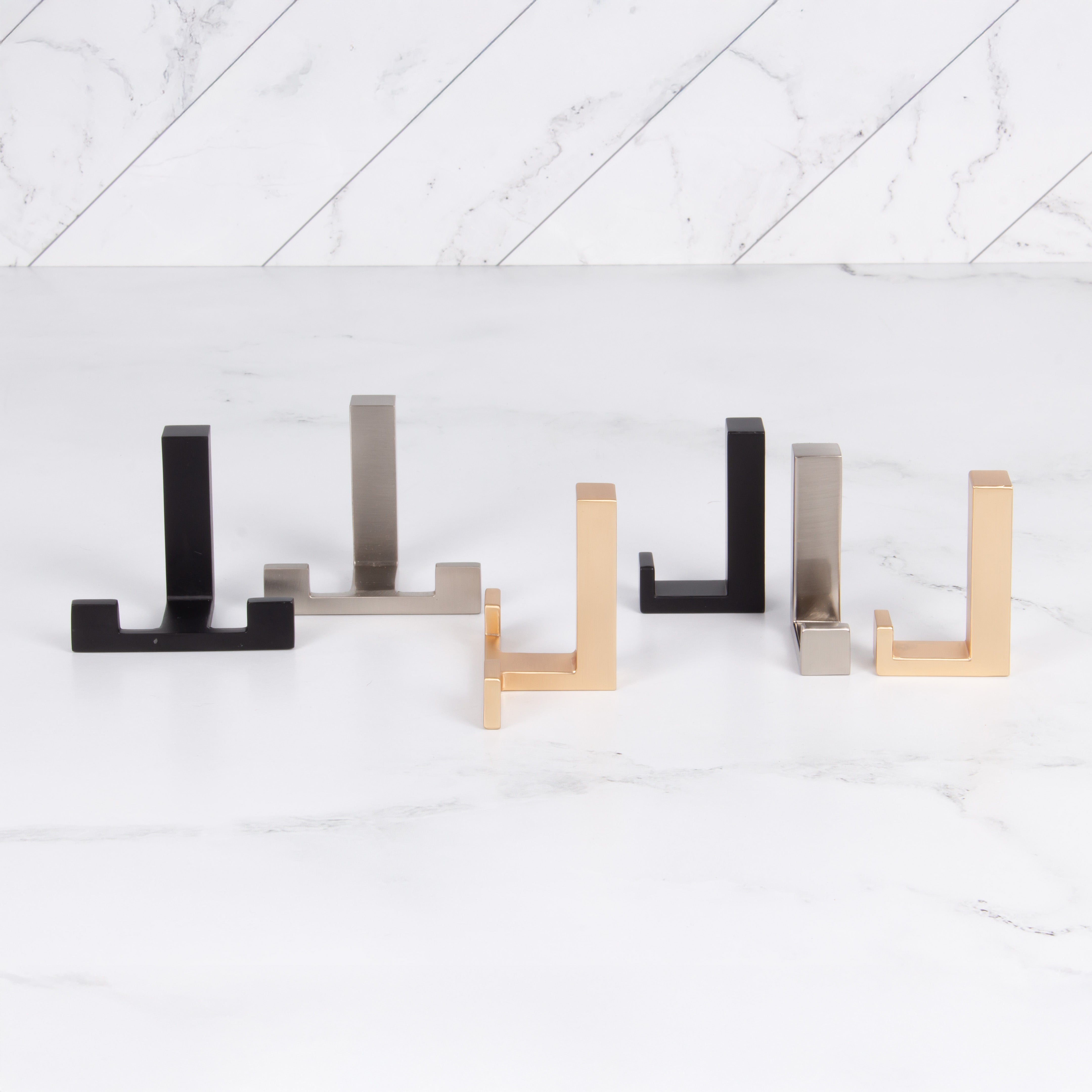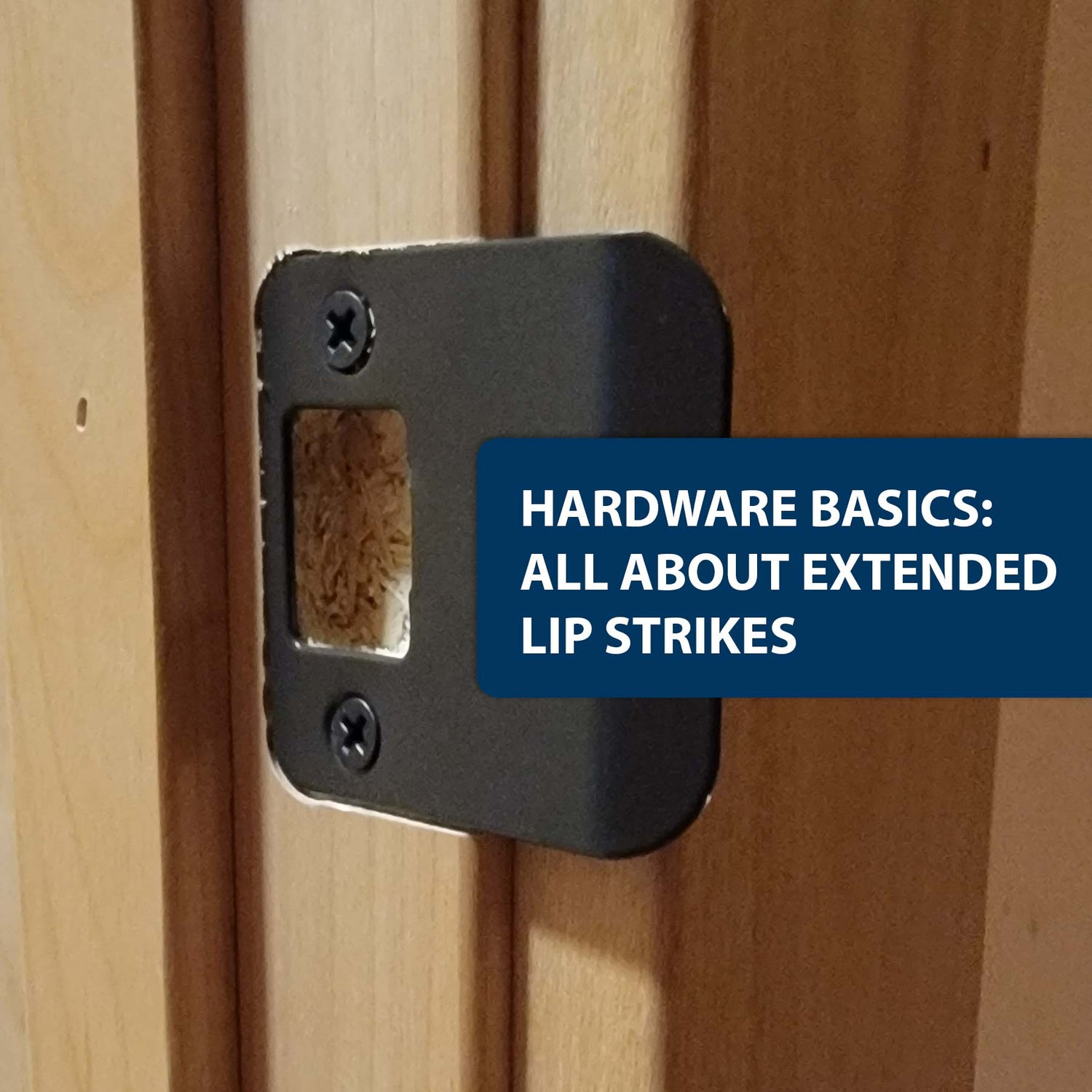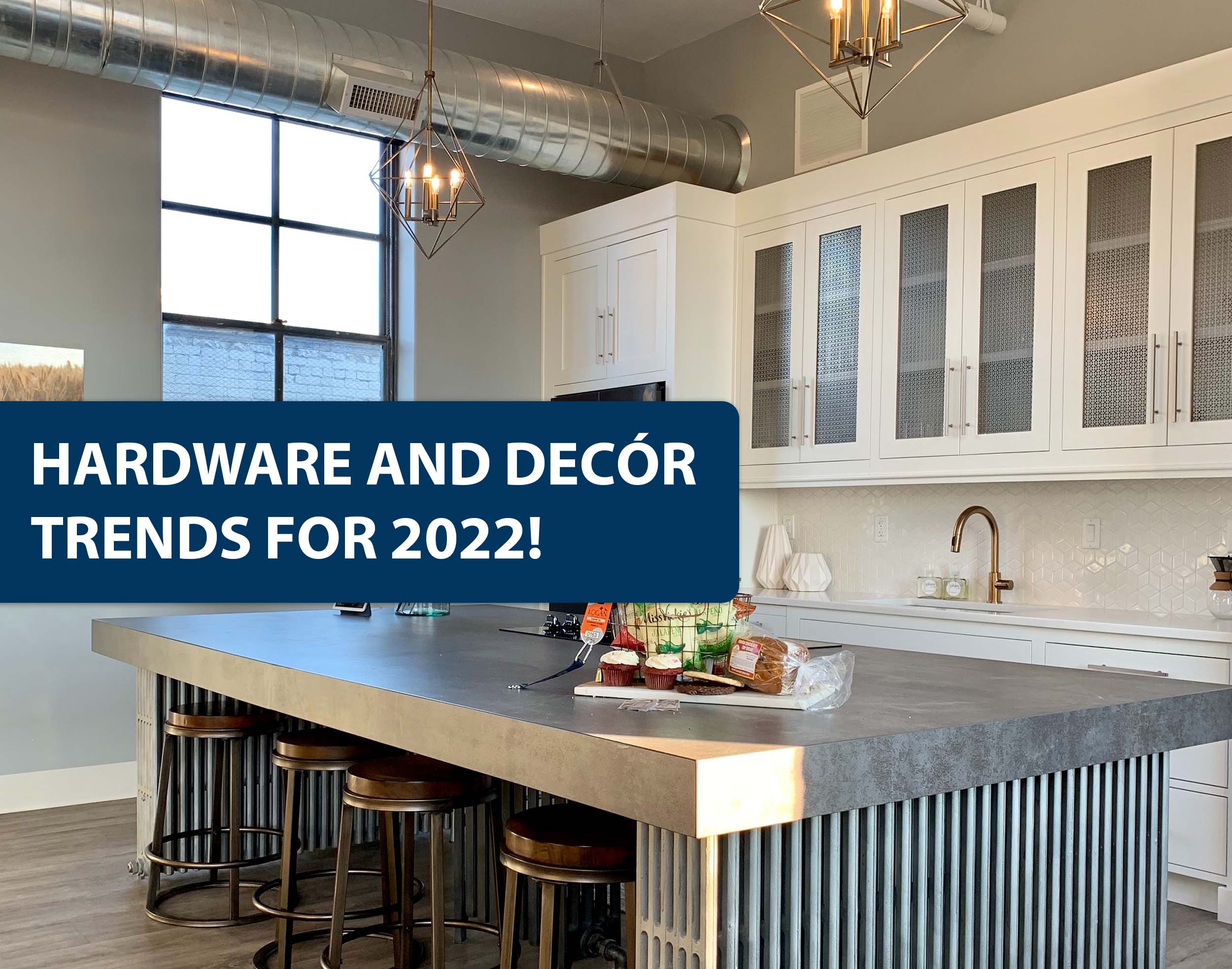Door strikes are one of those items that no one notices – until there’s a problem, anyway. Many door locks come with a standard full lip strike, which works fine as long as the trim around the door is narrow enough to fit behind the strike plate. If your house has thicker or more decorative casing, a standard strike won’t cover it, and, before long, the trim will be gouged and scuffed.
Extended lip strikes are an easy, DIY-friendly answer to this common problem! These strikes come in a variety of lengths and help protect the door casing from wear and tear caused by the latch. You can easily install them with just a screwdriver, and if you choose strikes with rounded (radius) corners, they’ll fit inside the existing strike cutout in many door jambs.
If you’re replacing a too-short strike plate with an extended strike, be sure to choose one that matches your existing hardware. In addition to traditional finishes like polished brass and satin chrome, extended strike plates also come in a wide variety of finishes, including the popular matte black, oil-rubbed bronze, and satin nickel finishes.
How do you know what length strike will cover your trim? After all, a strike that’s too long will stick out into the opening and catch on purse straps, belt loops, and pockets. The easiest way to determine what size strike you’ll need is to measure from the center of the screw holes on the prepared jamb to the edge of the trim and then add ¼”. So, if your trim measures 1-1/2” from the center of where the screw holes are, you should order a 1-3/4” extended strike.

Keep in mind that the measurements for the extended strikes are also from the center of the screw holes to the end of the lip, so your 1-3/4” strike will actually measure 2-1/4” overall. This accounts for the ½” from the center of the screw holes to the back of the strike.

So, grab a measuring tape and a screwdriver and replace any strikes that aren’t quite cutting it. You’ll be glad you did!





5 comments
A.R. Salbi
is there 4 inches and 4 .5 inches extended door strikes in chrome?
Thanks
Ron Fassio
I need 25 extended full lip strike plates in satin brass similar to Schlage 608. They need to be 1 1/2” from screw holes to front of lip
Patrick
I need a new deadbolt. The hole where strike plate goes its taller and it sinks in doorjam. Can I double plate it
Marty Baker
Thanks. I bought a dead bolt strike plate thru Walmart from Home design hardware
Thxs for a good product let’s hope it will hold up to Galveston salt spray
Marty Baker
Tammy
Thank you for this information! Perfect to help me understand.
Leave a comment
All comments are moderated before being published.
This site is protected by hCaptcha and the hCaptcha Privacy Policy and Terms of Service apply.